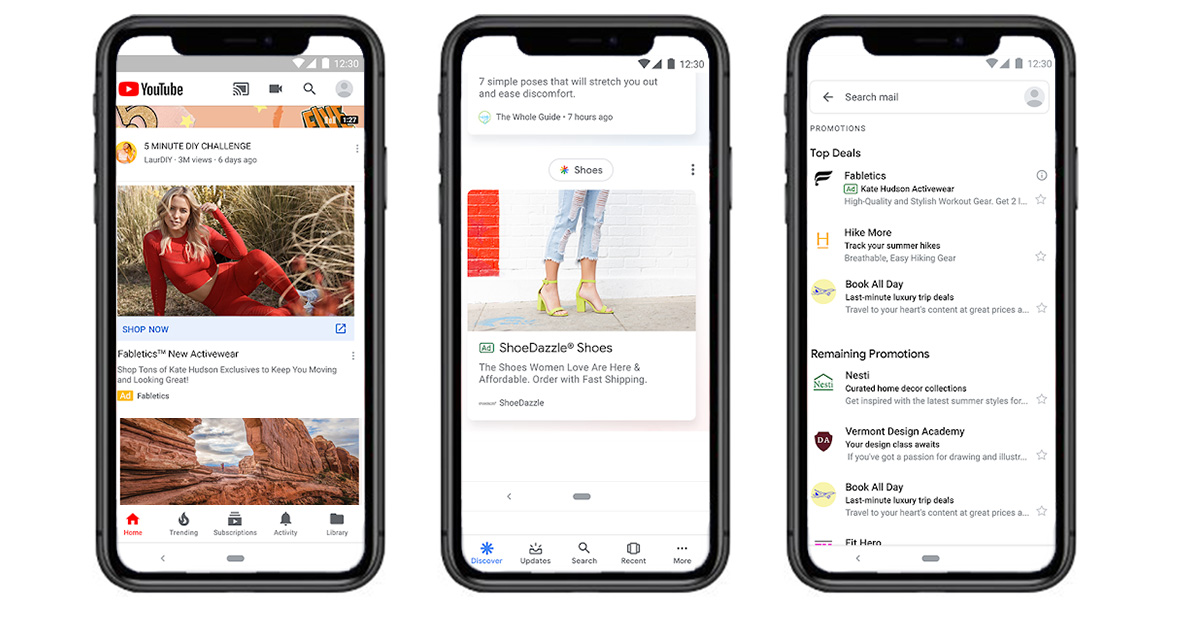Facebook Story Ads For eCommerce: All You Need to Know
For a fact, most people are story seekers. And the justification for that is simple; humans enjoy stories so much because they spark our imagination. In this era, enterprises that employ storytelling successfully engage and capture their target audience. If you are not using Facebook Story Ads for eCommerce, you’re losing out on more significant audience interaction.
After watching a company’s Story, 58% of viewers claim to have explored the brand’s website, 50% claim to have gone to a website to make a purchase, and 31% claim to have visited a store to check other offers.
Facebook reports that more than 500 million users use its stories feature, posting more than one billion stories daily. Meanwhile, four million marketers have been using stories on Facebook each month since January 2020 to achieve their goals.
Many distinct demographics have been won over by visual appeal and engaging stories, including all those who still use Facebook as their primary social networking platform. With no indications of retarding, the platform continues to be a force in connecting sellers with potential customers.
In this eye-opening retail guide, you will learn how to use Facebook Story Ads for eCommerce and the best practices to implement that guarantee results within a short period.
What are Facebook Story Ads for eCommerce?
Facebook Stories are compilations of vertical videos and photos that appear at the top of the newsfeed and cease to exist after 24 hours. You can watch the Facebook Stories (Narratives) of your contacts by hitting (clicking) the button on their profile picture or in the Stories section of your newsfeed. If there are numerous Stories, they will all play sequentially and appear on full screen. You can click on each one to advance more quickly or swipe left to move on to the following account.
Facebook Storie’s Specifications for eCommerce
Are you prepared to begin posting Facebook Stories? Before you start crafting stories for your eCommerce Facebook page, take note of the following requirements:
File Formats: GIF, PNG, and JPEG, PNG, are the acceptable file types for images on Fb Stories. For videos, maintain GIF, MOV, or MP4 format.
File Size: Not more than 4GB.
Duration: Fb video Stories have a maximum duration of 20 seconds. Nonetheless, if you choose to use this format for advertising, you can make video Stories that last up to 15 seconds.
Video Resolution: Maintain a resolution of 1080 x 1920 pixels with an Aspect Ratio of 9:16.
How to Create Facebook Stories for eCommerce
To post a Facebook Story Ad from a business Page, you need editor or administrator access. Unlike Instagram, Fb allows you to post Stories via your desktop, though the tools are somewhat limited and let you experiment with images and text. Consider posting from the Fb app to give your Stories more life and to make use of the capabilities Facebook has to offer.
Step 1: First, navigate to Ads Manager and select “Launch a new campaign”. Next, pick a marketing goal that permits adverts within stories.
Above, we have highlighted all the objectives that support (blend) story ads.
Step 2: Click on continue, then choose your Audience. When deciding on a placement, select Automatic Placements (Recommended).
The “auto placement” option is ideal since you’re utilizing various locations, making your ads show to different people. Remember, stories are one of these placements. To view your existing placements, click on Edit Placements.
Step 3: Set the budget and schedule after you finish placements. Then decide on the Instagram account and Facebook page you want the ad to promote.
Note: While the manual process can prove tedious when done weekly, businesses have found a proven alternative by leveraging ConvertedIn Tool to manage their Ad sets automatically and effectively.
Step 4: Given that your story ads will be displayed on Facebook, choose Single Video or Image as the format.
Note: The carousel layout is exclusive to Instagram.
Step 5: Click on the “Confirm” button to complete the setup of your ad.
Best Practices: How to Customize the Single Image Ad for Stories
Utilize the story’s Creative Tools and Themes (Templates) to make your ads more captivating and appropriate for your story copy. To do this accurately, follow the following steps below;
Step 1: From the Ad level > Media, Click “Select a placement” for customization.
After that, select Facebook Stories.
Step 2: Now, you can choose from many templates, edit the media, and update the text in a pop-up that will appear.
Step 3: Via this section, you can now customize your eCommerce Story Ad by adding a piece of distinctive music, backdrop color, or call-to-action info (effects) that corresponds to your brand.
Step 4: Click on “Save”
Facebook Story Ads for eCommerce: Best Practices to Drive Massive Sales

1- Use Ad Personalization strategies
Begin by tailoring your ads to a specific “target audience.” To do this, consider your audience’s psychographics, demographics, location, and interests.
Facebook’s algorithm can track a user’s buying behavior, internet activities, and type of devices. This enables you to customize your content and forecast the outcome of your ads.
With inputted zip codes, you can also determine the miles and radius of the audience you wish to target within a specific region.
2- Add a Call To Action (CTA)
By placing a CTA in postings, enterprises can persuade users to visit their site, make a purchase, dial the store number, or perform other actions. In Ads Manager, to track video views, brand awareness, or reach, click on “Add a webpage Url” and then choose your CTA from the dropdown list.
The Facebook Stories platform offers a variety of call-to-actions, such as “Shop Now," “Subscribe," “Sign Up,” and “Contact Us.” Also, irrespective of your fan base, all Fb business Pages can display CTAs.
Note: The CTA only displays at the base of a Fb Story.
3- Add Captions
Ensure the content you produce is accessible to all audiences. Recall that many individuals use their phones in silent mode to view Stories. Due to this, they can miss your message if you don’t include captions. Currently, Fb does not provide an option for Stories “Captions” that are created automatically. For those that find it stressful to add it in manually, you can leverage video editing tools like “Apple Clips and Clipomatic” to sync texts with your speech.
4-Make Use of Templates
When it comes to design, not everybody has a keen sense of aesthetics. But no need to worry; templates can be used to help communicate your brand’s initiatives, whether it be primary, classic, or a total mix of concepts.
Additionally, businesses have the choice to create ads for Fb, Messenger, and Instagram using “Facebook” default Story templates. After completing your Ads via the Ad Manager, choose a template and modify it as necessary. If you aren’t okay with Fb default templates, you can utilize free templates provided by Adobe Spark.
5- Shoot Video Vertically
Most persons hold their phones upright when using them. Despite how appealing it would be to take landscape-style, horizontal photos, they won’t be as simple and quick to see. In reality, research indicates that 90% of the time, mobile users hold their smartphones vertically. By making your videos reflect how people hold their cellphones, you can meet your clients where they are.
Very Inspiring?
Oh, Yes. Facebook Story Ads for eCommerce is a brand-new, fascinating way for businesses to connect with consumers through visually appealing content. And more interesting is the fact that convertedin has an AI-supported program that manages and automates your Facebook ads for your target audience.
Are you trying it out today? If yes, Congratulations; If No, kindly request a Demo; let’s help you understand how it works.

